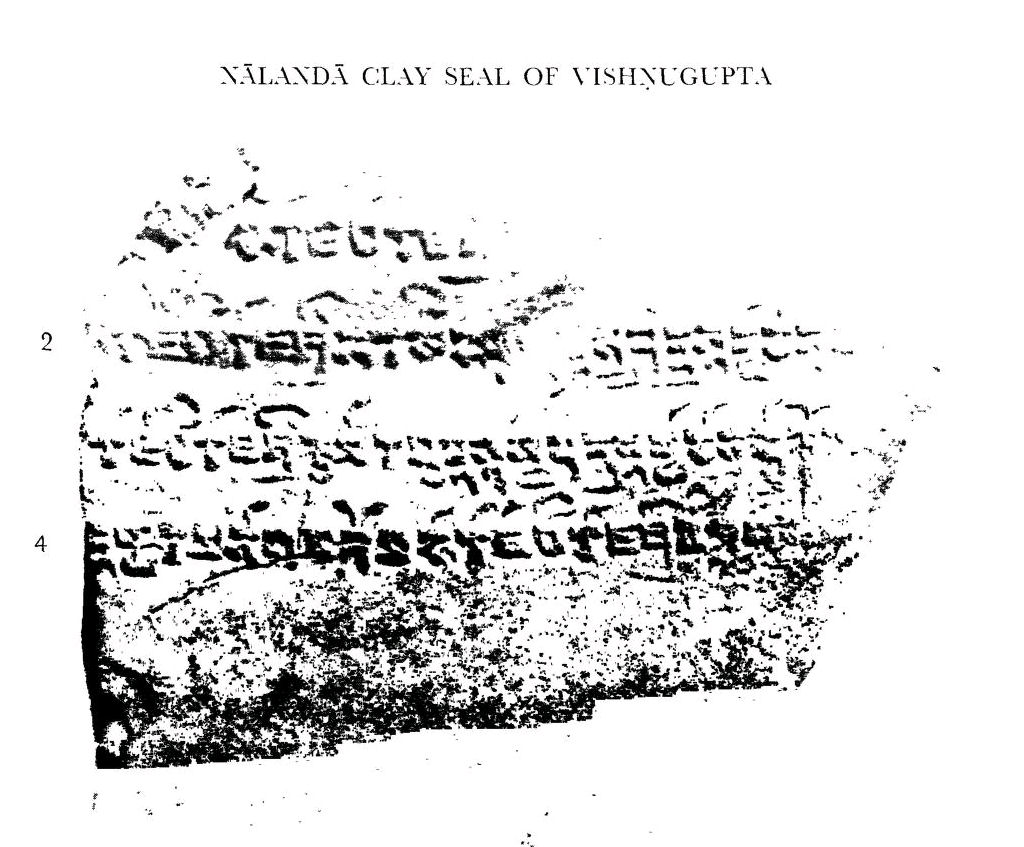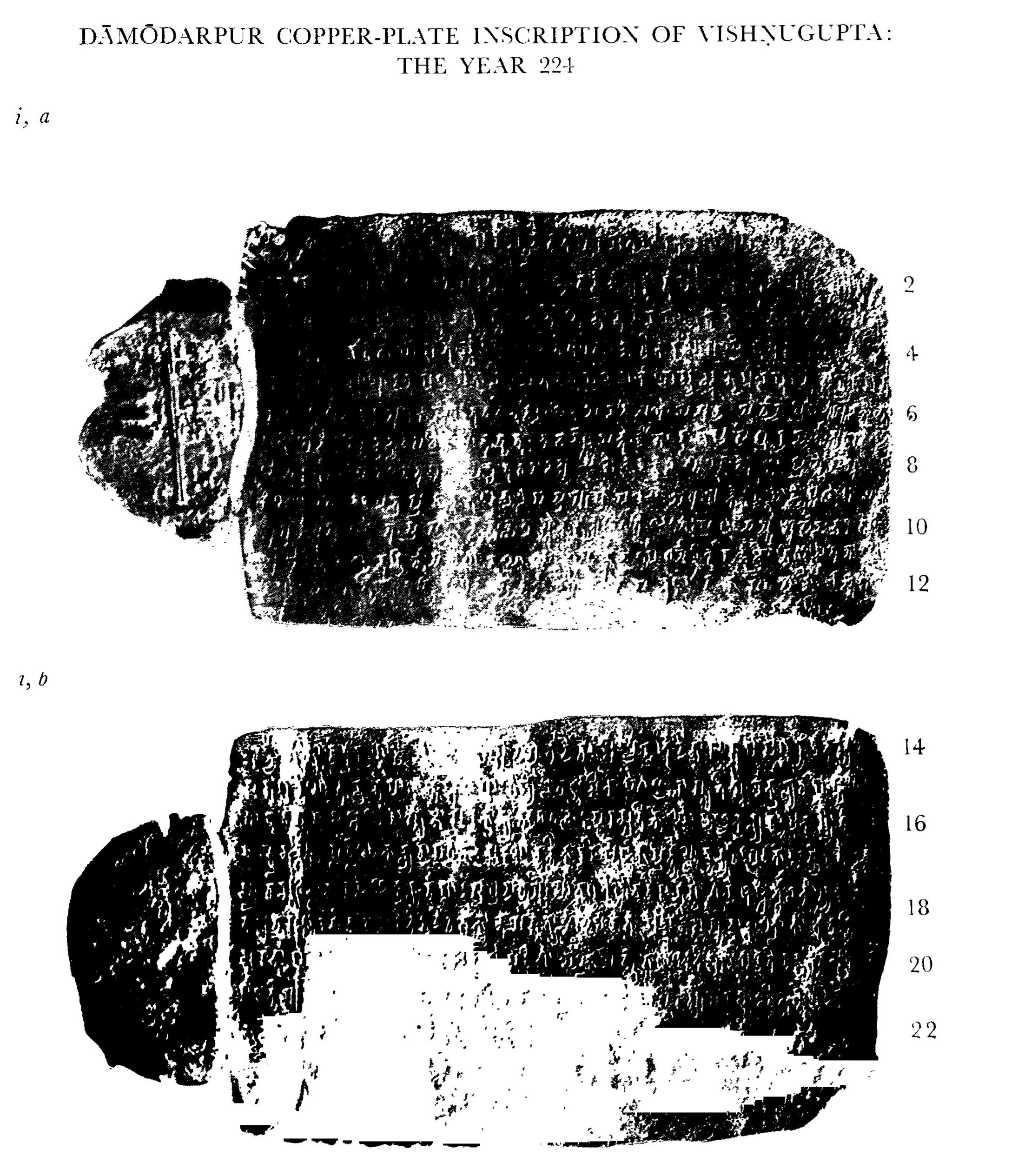1. Overview
Vishnugupta Chandraditya (विष्णुगुप्तVi-ṣ-ṇu-gu-ptaSanskrit) was a significant figure in the Gupta Dynasty, generally recognized as the last emperor of the Gupta Empire. His reign spanned a decade, from approximately 540 to 550 CE, a period during which the empire faced significant decline. His existence and rule are primarily substantiated by historical artifacts such as the Nalanda clay seal and the Damodarpur copper-plate inscription, which shed light on his lineage and key administrative acts. This article will delve into his family background, the events of his reign, the primary historical records that confirm his place in history, and the broader context of the Gupta Empire's eventual collapse during his time.
2. Life and Reign
Vishnugupta's life and reign are primarily understood through epigraphic evidence that details his lineage and key administrative actions during a period of significant imperial decline.
2.1. Family and Accession
Based on historical records, Vishnugupta's lineage is traced through various archaeological findings. A fragment of his clay sealing, discovered at Nalanda during excavations in 1927-28, identifies him as the son of Kumaragupta III and the grandson of Narasimhagupta. However, another account, derived from a separate Nalanda seal, also identifies Vishnugupta as the son of Kumaragupta III but states his grandfather was Purugupta. These records collectively indicate his direct descent from the Gupta dynasty's imperial line, solidifying his claim to the throne amidst the empire's internal challenges.
2.2. Reign and Activities
Vishnugupta's reign lasted for a period of 10 years, from approximately 540 to 550 CE. During this time, he carried out administrative actions typical of a Gupta emperor, despite the empire's diminishing power. One notable activity documented is a land grant he made, which is recorded in the Damodarpur copper-plate inscription. This grant was issued in the area of Kotivarsha, located in Bangarh, West Bengal, during the year 542 or 543 CE. This specific act provides insight into his continued exercise of imperial authority, even as the Gupta Empire was facing external pressures and internal fragmentation.
3. Historical Records and Context
The primary historical evidence supporting Vishnugupta's existence and reign comes from specific seals and inscriptions, which also help contextualize his rule within the broader narrative of the late Gupta Empire.
3.1. Key Seals and Inscriptions
The existence and reign of Vishnugupta Chandraditya are primarily corroborated by significant archaeological findings, notably the Nalanda clay seal and the Damodarpur copper-plate inscription.
The Nalanda clay seal, discovered during excavations at Nalanda between 1927 and 1928, is a crucial piece of evidence. It explicitly identifies Vishnugupta as the son of Kumaragupta III. Regarding his paternal grandfather, the seal indicates Purugupta, while a fragment of the clay sealing from the same site suggests Narasimhagupta. This seal provides direct epigraphic confirmation of his imperial lineage within the Gupta Dynasty.

Another vital historical record is the Damodarpur copper-plate inscription. This inscription dates to Year 224 of the Gupta Era, which corresponds to 542 or 543 CE. In this record, Vishnugupta details a land grant made in the region of Kotivarsha (modern-day Bangarh in West Bengal). The inscription not only verifies his reign during this specific period but also offers a glimpse into the administrative practices and geographical extent of the empire under his rule.

3.2. Decline of the Gupta Empire and Contemporary Powers
Vishnugupta's reign occurred during a period of significant decline for the once-mighty Gupta Empire. By the mid-6th century CE, the empire had lost much of its territorial integrity and centralized authority. This decline was largely exacerbated by the rise of powerful regional kingdoms and the incursions of invaders.
A key contemporary power that significantly impacted the Gupta Empire was the Aulikara ruler Yashodharman. Around 532 CE, Yashodharman successfully occupied a substantial portion of northern and central India, including territories that had previously been under Gupta control. This expansion by Yashodharman critically weakened the Gupta Empire's influence and territorial reach, pushing it towards its eventual dissolution. Vishnugupta's land grant, documented in the Damodarpur inscription, was issued after this significant territorial loss, highlighting the diminished circumstances under which he ruled. His inability to reverse these losses cemented his position as the ruler presiding over the final phase of the empire.
4. Legacy and Historical Assessment
Vishnugupta's place in history is primarily defined by his role as the last recognized emperor of the Gupta Empire, a period marked by the definitive end of a significant era in Indian history.
4.1. Role as the Last Emperor
Vishnugupta Chandraditya holds a unique and significant place in Indian history as he is generally regarded as the last recognized emperor of the Gupta Empire. His 10-year reign, concluding around 550 CE, marks the definitive end of the imperial phase of the Gupta Dynasty. While the empire had been gradually fragmenting due to internal strife and external pressures, Vishnugupta's inability to restore its former glory signified the irreversible decline. His reign was the final chapter for an empire that had ushered in a 'Golden Age' of Indian art, science, and administration. The subsequent period saw the complete fragmentation of the Gupta territories into smaller, independent kingdoms, effectively bringing an end to the centralized imperial rule that had characterized the Gupta era for over two centuries. His legacy is thus inextricably linked with the dissolution of one of ancient India's most influential empires.